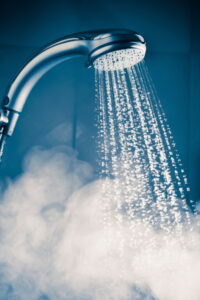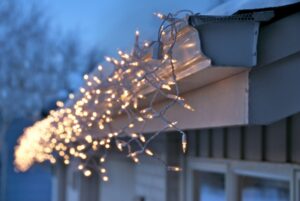Dust, pet dander, and other allergens can wreak havoc on your household if they’re not controlled properly. From coughing and sneezing to dry eyes and an itchy throat, the symptoms caused by allergens can range in severity. To limit or even completely remove common allergens from your home, consider adding filters to your home’s vents as an extra line of defense.
While your HVAC system likely has a filter built into the system itself, many homeowners are beginning to install return air filters in their home’s vents as well. This will help to remove any allergens that might have accumulated within your vents, as well as catch any allergens that might’ve slipped through the cracks and gotten through your HVAC system’s filter.
Benefits of Return Air Filters in Your Home’s Vents
Allergens such as dust, pet dander, and airborne bacteria can cause common allergy symptoms like sneezing, coughing, and dry eyes, but the issues don’t stop there. Common household allergens can also develop sicknesses like the flu or the common cold in anybody who breathes in the contaminated air.
By adding air filters to your home’s vents, you’ll catch and remove any allergens before they reach your loved ones within your home. Those within your home will likely notice the difference in the air quality almost immediately, as their allergy symptoms are greatly reduced.
Negatives of Air Filters in Your Home’s Vents
While the benefits are certainly noticeable and important, it’s also a good idea to consider the drawbacks in adding filters to your vents.
After adding an air filter to your vents, you’ll likely notice decreased airflow. This can cause your HVAC system to stay on longer as it tries to match your thermostat’s set temperature, leading to higher energy bills and consumption.
Additionally, vent filters are more of a short-term solution. In order for your filters to work effectively and limit the airborne allergens within your home, you’ll have to change the filters quite frequently.
How to Install Filters
Clean and Clear Your Vents
Before installing filters within your vents, you’ll need to turn off your heating or air conditioning system and make sure that your vents and return air vents have been cleaned and cleared of any dust or debris. Properly cleaning your vents before adding a vent filter will help to reduce the immediate workload that your filter will have to endure.
Cut Sheet Appropriately
Typically, vent filters will come in the form of one large sheet. You’ll have to cut the sheet down to an appropriate size for your individual vents and return air vents. Make sure that the vent filter you’ve cut out is the proper size and that there are no openings where non-filtered air can leak out.
Apply Filter
After you’ve cut the sheet appropriately, apply the supplied tape or velcro to the grille of the vent and simply press onto the areas where the adhesives are attached. The filter should be secure on the grille of the vent.
Where Can You Buy Return Air Filters?
Vent filters are becoming far more popular among homeowners, leading to increased availability at affordable prices. Check your local hardware or home improvement stores to find vent filters. If they don’t have any in stock, you’ll surely be able to find them on their website.
How Often Should Filters Be Replaced?
While filters for vents and return vents are certainly a great way to reduce the number of indoor allergens within your home, they’re not a long-term or permanent solution. As a general rule of thumb, vent filters should be replaced once a month or every other month.
For a more long-term solution to limiting your home’s indoor allergens, consider installing a media air cleaner or a UV air purifier.
Contact Douglas Cooling & Heating for Indoor Air Quality Services
For more information on how to improve your home’s indoor air quality, or to inquire about media air cleaners or UV air purifiers, get in touch with the professionals at Douglas Cooling & Heating. We’ll provide you with any information you’re seeking and will let you know how our IAQ products can positively benefit your home.


 Late maintenance on your teeth can turn that cleaning into an appointment to fix a cavity. Delayed maintenance on your vehicle can lead to expensive repairs. And, as you may have guessed, delayed or skipped
Late maintenance on your teeth can turn that cleaning into an appointment to fix a cavity. Delayed maintenance on your vehicle can lead to expensive repairs. And, as you may have guessed, delayed or skipped  There is nothing quite so annoying as standing outside your shower while you wait for the water to heat up…and you wait…and wait….and the water just never heats. Sound familiar? If it does, you need to reach out to us to have a talk about your
There is nothing quite so annoying as standing outside your shower while you wait for the water to heat up…and you wait…and wait….and the water just never heats. Sound familiar? If it does, you need to reach out to us to have a talk about your  There is a lot of excitement for holiday gatherings to come, even though they may be smaller than in previous years. Small is still good though! The priority should be on safety instead of size so everyone is able to truly enjoy themselves. With that said, there are a few different ways that you may not have thought of to ensure the safety of your home this season. That’s what we are here to help with.
There is a lot of excitement for holiday gatherings to come, even though they may be smaller than in previous years. Small is still good though! The priority should be on safety instead of size so everyone is able to truly enjoy themselves. With that said, there are a few different ways that you may not have thought of to ensure the safety of your home this season. That’s what we are here to help with. Uh-oh. You got the news that your heater is ready to call it quits. You were expecting a repair service but now you are looking at a replacement for your
Uh-oh. You got the news that your heater is ready to call it quits. You were expecting a repair service but now you are looking at a replacement for your  If you are lucky enough to be able to have your loved ones come by this Thanksgiving, the last thing you want to happen is to welcome them into an uncomfortably cold home. Thankfully if you have a well-kept heater that is on the newer side, you shouldn’t need to worry. If you have a heater that is aging and seems to be struggling to get the job done, it is a good idea to reach out for help from our team of professionals.
If you are lucky enough to be able to have your loved ones come by this Thanksgiving, the last thing you want to happen is to welcome them into an uncomfortably cold home. Thankfully if you have a well-kept heater that is on the newer side, you shouldn’t need to worry. If you have a heater that is aging and seems to be struggling to get the job done, it is a good idea to reach out for help from our team of professionals. We all know that the weather around here can be unforgiving at times. If you are looking to install a generator in the near future to help you get through periods of rougher weather, you should know there may be a delay in getting this system to your home.
We all know that the weather around here can be unforgiving at times. If you are looking to install a generator in the near future to help you get through periods of rougher weather, you should know there may be a delay in getting this system to your home.
